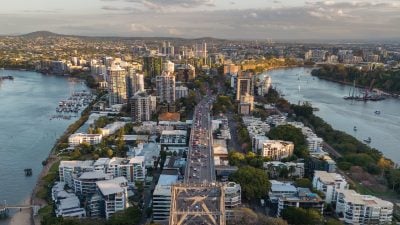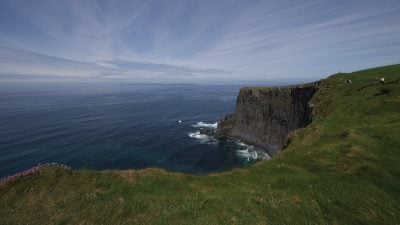Home / Latin America & Antarctica / Uruguay / An Uruguay Vacation Has So Muc…

An Uruguay Vacation Has So Much to Offer for a Small Country
An Uruguay vacation offers visitors a varied, interesting, and enjoyable experience… as small as this South American country is.
Let’s place Uruguay geographically. It lies just south of Brazil and east of Argentina. I personally visited Uruguay by making it an extension on a trip to Argentina. I simply boarded a hydrofoil in Buenos Aires and landed in the north of the country at the old city of Colonia del Sacramento (journey time approximately 1 hour), then headed south on a comfortable inter-city bus to the capital, Montevideo (journey time 2.5 hours approximately), followed by another bus ride further south to the outstanding resort of Punta del Este (journey time 2 hours approximately). I then returned by bus to Montevideo and took another hydrofoil back to Buenos Aires (journey time 2 hours approximately). From this, you can see the country is fairly compact. There are alternatives to these routes. On an Uruguay vacation, you can travel all the way by bus to Colonia del Sacramento and you can fly from both Montevideo and Punta del Este to Buenos Aires. From all this, you can see that Uruguay is not only accessible but easy to travel around.
Uruguay is one of the most stable, progressive, and safe countries in South America. You can add to this, one of the most sophisticated, culturally. It is often referred to as the “Switzerland of South America” because its economy has many of the features of this European country. The name Uruguay in the local indigenous language, Guarani, means “River of Colourful Birds.”
Colonia del Sacramento
Colonia is a totally charming small city which was awarded UNESCO World Heritage status. It’s not surprising, as it is here that history and culture come together. The old part of Colonia, known as the Barrio Historico, is made up of picturesque narrow cobblestone streets with buildings which reflect both Spanish and Portuguese colonial architecture. Both nationalities have, over time, ruled this part of Uruguay. The city has a history dating back to the late 1600s. One way to simply enjoy Colonia is to walk around and discover the many side streets, including the Calle de Suspiros (Street of Sighs) which personifies the old quarter. After this, head to the large atmospheric main square and partake of a drink or a snack. There are also a number of restaurants offering tables inside and outside for an evening meal in the square. You will notice on your walk, a number of excellent, high-quality handicraft shops to lure in the visitor. Another sight which will catch your eye is the number of interesting-looking vintage cars which are everywhere and are used by the locals.
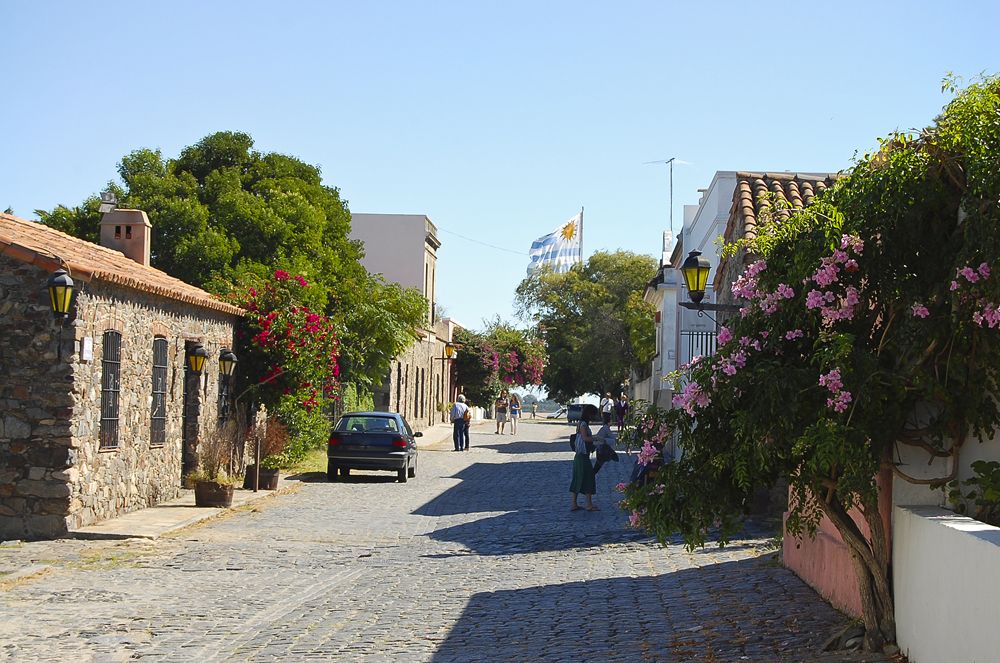
Other sights to take in include the Old Town Gate, built in 1745 by the Portuguese. The town was fought over by the Portuguese and the Spanish so this gate, with its walls, served to defend it from attacks. Today, it is still well-preserved and a frequently visited place. It marks the dividing point between the new part of the city and the historic part. The Church Matriz in Colonia is considered the oldest church in Uruguay and is another UNESCO World Heritage site. The El Faro Lighthouse, built in 1857, is worth seeing, first, because of its shape and design. The lower part is square and the upper part is cylindrical. The second reason is the view from the top which can be visited, allowing an unrestricted panorama over the city and the River Plate, the waterway between Uruguay and Argentina.
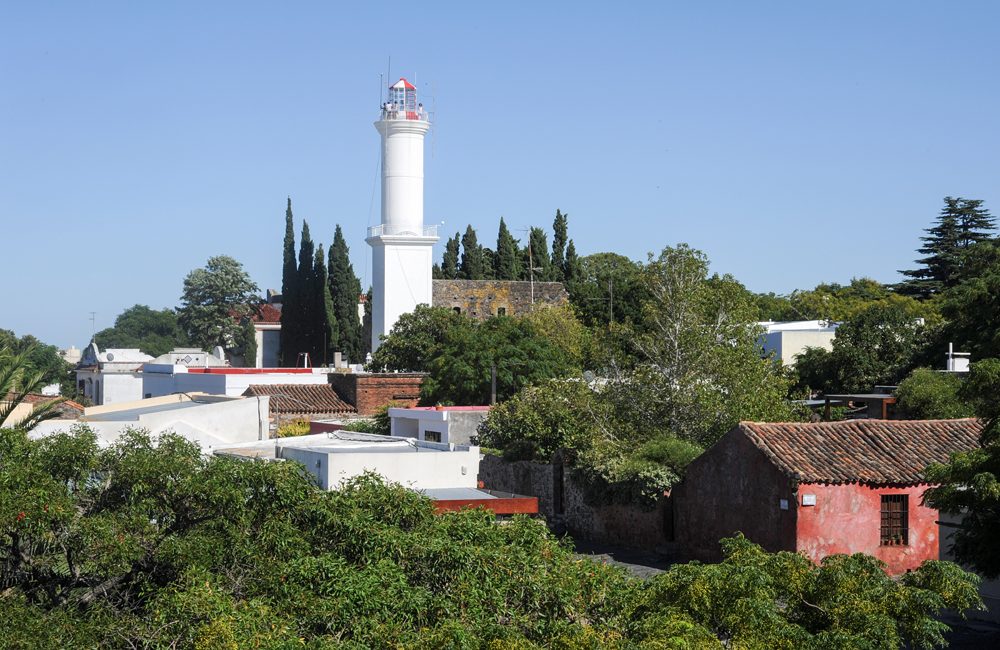
For museum buffs, there is the Granja Colonia Arenas Museum. This started out as a modest collection of souvenirs collected by the family Arenas and now has 80,000 items collected by the family over the past 50 years. It actually holds 5 awards in the Guinness Book of World Records. Here are some reasons, quirky though it may seem. There are 16,000 plus black graphic pencils, 3600 perfume bottles, 36,000 key chains, 4800 ashtrays, 10,000 matchboxes, and several hundred drink cans. There are also vintage trinkets and random objects that the family has amassed. To finish off with, the museum offers traditional fruit-flavoured jams/jellies, as well as some more unique flavours such as onion and pepper ones. Tasting is free and they are available for purchase.
While in Colonia, you should visit one of the local wineries just outside the city. There are several which offer guided tours with tastings. And here is something else that is unusual. About an hour north of Colonia, in the town of Fray Bentos, home of the meat packer, Fray Bentos, of corned beef fame, there is a museum which was awarded UNESCO World Heritage status. The company opened a museum which illustrates the entire meatpacking process, and to quote UNESCO, “provides evidence of the interchange of human values between European society and the South American population of the 19th and 20th Centuries.” Well, I can appreciate this is possibly not for everyone. So, let’s move on to the capital, Montevideo.
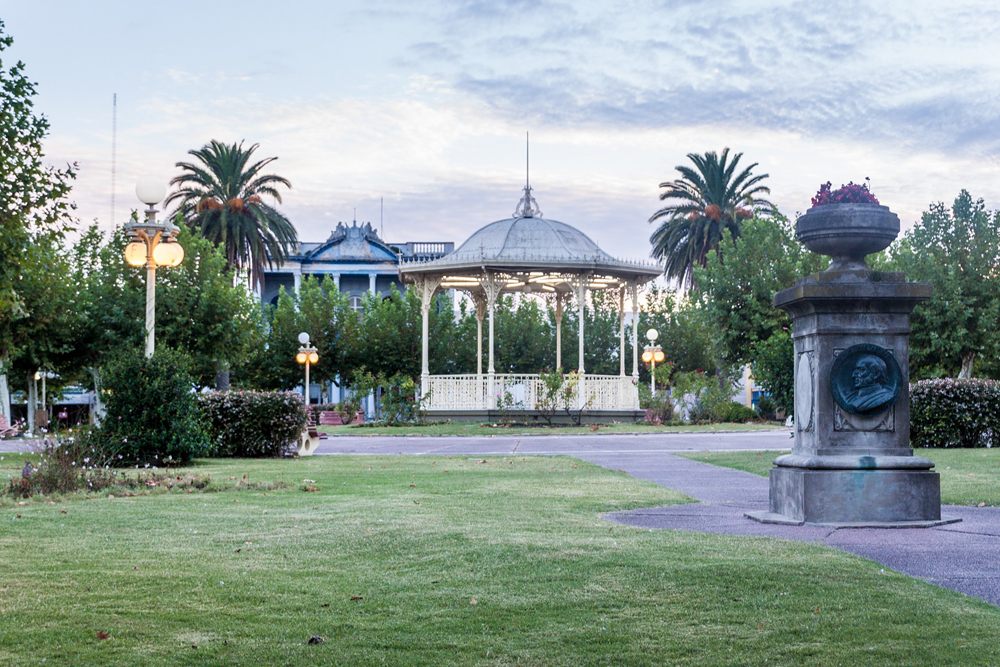
Montevideo
Montevideo is home to around 50% of the country’s population. The first thing that struck me here was that the city had two sides to it, derived from its physical make-up. There are the urban aspects and the coastal aspects. I was pleasantly surprised to find a resort within a city. Although not uncommon elsewhere in the world, for some reason, I didn’t expect it in Montevideo.
The city stretches along the coast for some 20 kilometres/12 miles but it is still, in the centre, very walkable. In the downtown business district, you will find Art Deco and Neoclassical buildings. The old city, called Ciudad Vieja, is a neighbourhood that has gone through major transformation, making it the main nightlife centre of the city. The beautiful old architecture here lends Ciudad Vieja its character. During the week, the pedestrian streets are full of visitors, street vendors, and street musicians. The atmosphere is lively yet not raucous. It is full of beautiful old architecture with outstanding examples of 17th and 18th Century buildings that have been renovated and restored to their original condition. One example is the Teatro Solis, an imposing building and Uruguay’s most important and renowned theatre which first opened in 1856 and was designed by the Italian architect, Carlo Zucchi. Another is the Montevideo Metropolitan Cathedral.
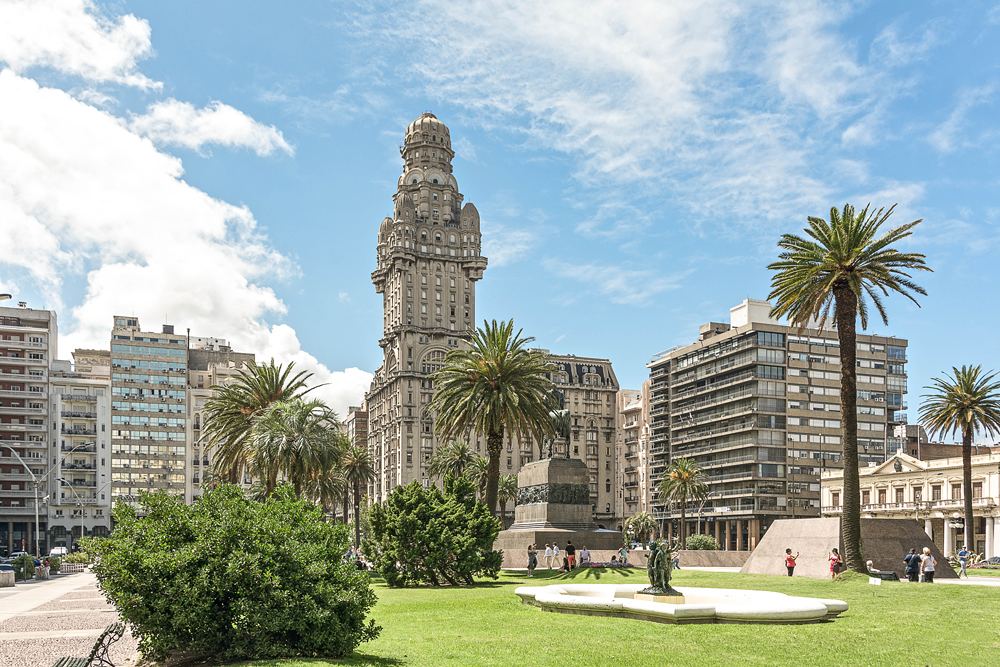
There are numerous atmospheric restaurants and tango bars. The main port of Uruguay is also located in Ciudad Vieja. Another colourful neighbourhood is Barrio Sur, with its modernist architecture and brightly-coloured houses painted in shades of pink, blue, green, yellow, purple, orange, and red. It also has a rich African heritage. On your Uruguay vacation, you might catch a performance of Candombe, a dance that came to Uruguay together with African slaves.
Should you wish to stay on the beach on an Uruguay holiday, there is a very attractive coastline which is part of the city. It is here that you will feel as though the urban districts don’t exist. You will see locals enjoying the several different beaches, either simply strolling, cycling, or rollerblading along the boardwalk, or sitting at outside restaurants and cafes. I understand there are 10 individual beaches that hug the shoreline, all with white powdery sand. Some of the main beaches are Playa Pocitos, Playa Ramirez, and Playa Buceo among others. There is a choice of hotels catering to international visitors.
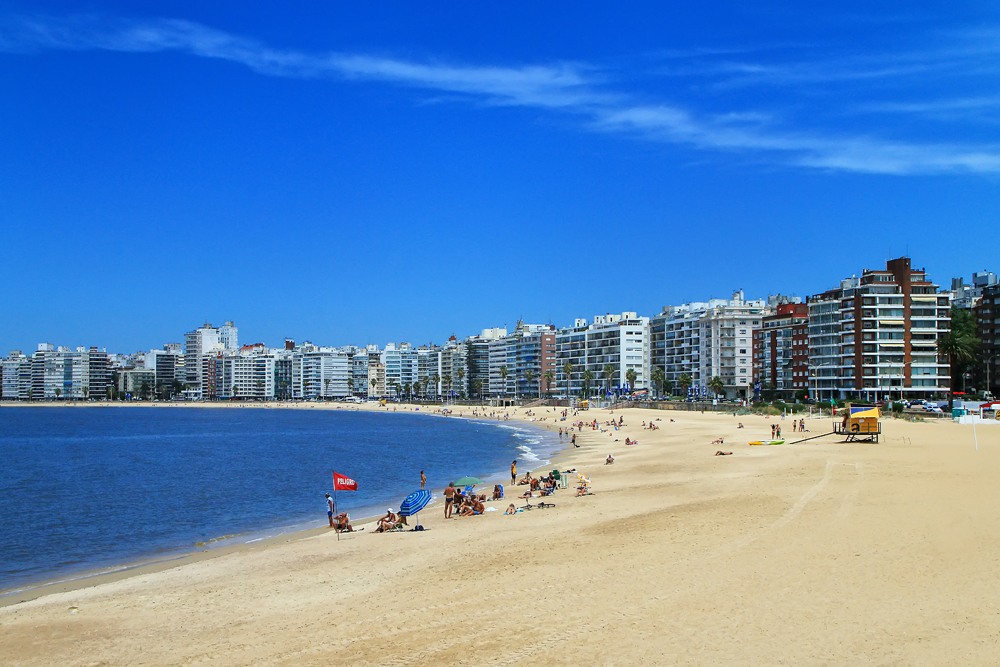
Punta Del Este
Punta del Este is an upscale resort in the south of the country, and South America’s most glamorous. I am reminded of resorts which can be found on the Mediterranean coast in Europe. It has been referred to as, “The Monte Carlo of the South,” and “The St. Tropez of South America.” What it offers, on an Uruguay vacation, is excellent beaches, an attractive city centre, and wonderful views of many sailboats bobbing up and down in the marinas. The city has quite a bit of Colonial architecture which contrasts with the more modern buildings. It is built on a peninsula with beaches and neighbourhoods on both sides. On one side, the sea is calm and suitable for swimming and families. Playa Mansa is the most popular beach where you can do almost everything – walk on the boardwalk, swim, windsurf, sail, and enjoy a number of good restaurants and cafes. On the other side, the beaches are somewhat more turbulent, suitable for surfing. Playa Brava is a popular beach on this side of the peninsula. Accommodation is plentiful, with a full range of hotels from budget to ultra deluxe. There are golf resorts, rental apartments, and boutique hotels. Punta del Este has a vibrant nightlife with a large selection of lively bars, nightclubs, and a casino at the Conrad Hotel. For dining, there is an excellent choice of restaurants. The main avenue in Punta del Este, Gorlero Avenue, offers art galleries, restaurants, cinemas, and a good selection of shops where you can purchase souvenirs, etc.
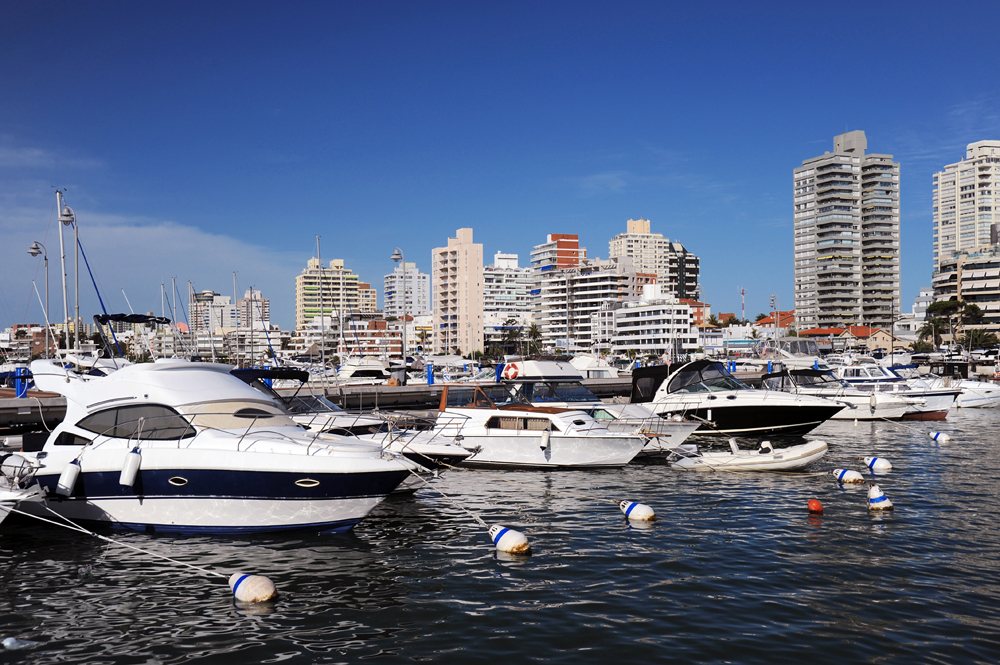
Apart from the usual resort activities, you can visit the Ralli Museum, which features modern and contemporary Latin American art, and the outdoor sculpture park at the Atchugarry Foundation, with its diverse collection of works by national and international artists. You can go whale-watching in the winter months and also see groups of sea lions. You can visit the artisanal market in the centre, which is ideal for souvenir-hunting and offering carvings, paintings, jewellery, and leather goods. For nature lovers, there is the Lussich Arboretum with its more than 100 species of plants set in 192 hectares/470 acres of land. Also be sure to visit Punta Ballena which is a viewpoint with a 360-degree panoramic view of the Atlantic Ocean. There is a unique building here, Casapueblo, which is both a hotel and an art gallery. There is a nearby island called Isla Gorriti which has National Heritage status and which is a 20-minute ferry ride away. It has good beaches as well as being rich in wildlife. This is a good place to view sea lions and whales. Finally, you must experience the beautiful amazing sunsets which exist in Punta del Este, especially at Punta Ballena.

I recommend a week in Uruguay to do justice to this small but very civilized country. You can do it either as a stand-alone Uruguay vacation or as an adjunct to a visit to Argentina.
Get more travel inspiration by email.
Subscribe
0 Comments

Get the latest travel trends & hear about the best deals on vacations around the world.
If you’re a Globetrotter, these are the newsletters for you!

